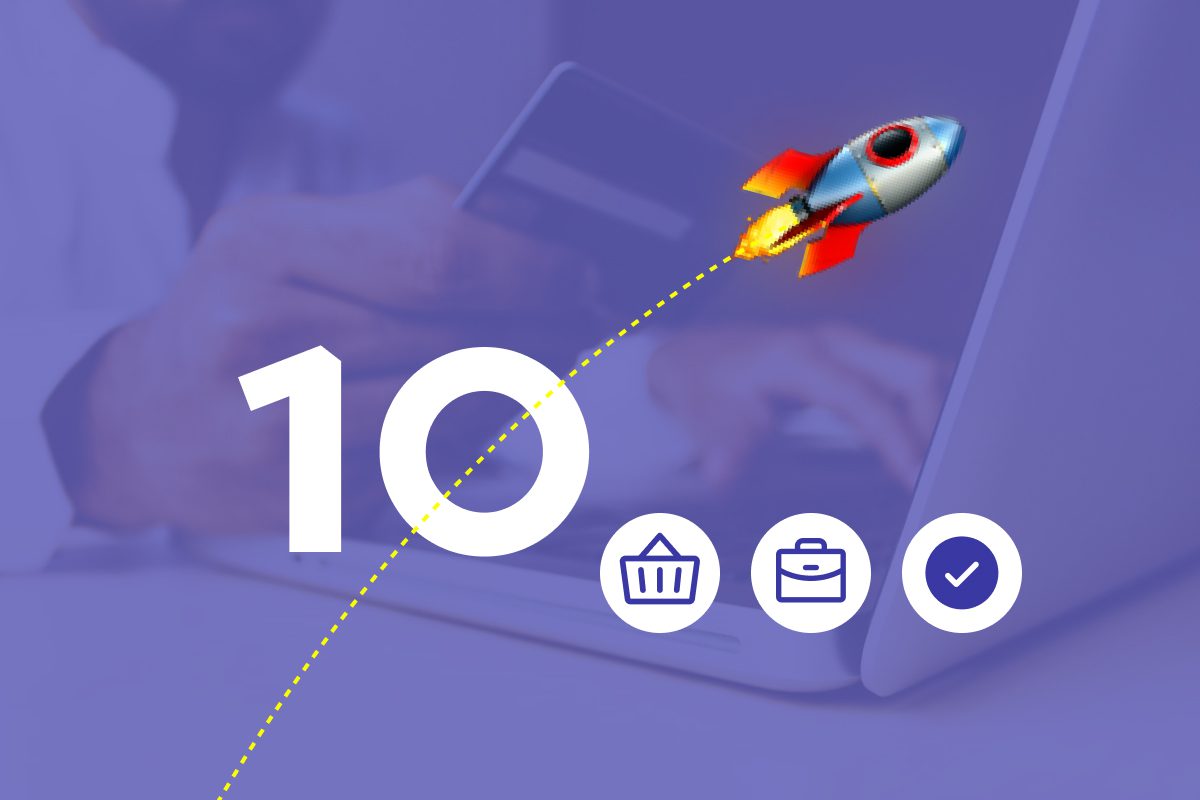10 Checkout Performance Optimization Tips to Reduce Cart Abandonment
Introduction
Are you losing customers due to checkout’s performance? Achieving a seamless checkout process is the linchpin of successful ecommerce. With an average cart abandonment rate of 69%, retailers lose thousands of dollars in potential sales.
Checkout optimization involves refining the conversion rate strategy, minimizing distractions, and building trust. We look at the top 10 optimization techniques to improve checkout performance, resulting in more revenue. Let’s get started!
Top Checkout Process Optimization Tips to Reduce Lost Sales
1. Improve Speed
Faster site speed increases customer satisfaction, leading to better conversion rates. A slow-loading site may risk more bounce rates before the purchase-funnel is completed. There are many ways you can optimize the speed of your ecommerce website, such as:
Optimize Images: Ensure the images are in a suitable format and size to not hamper the loading speed.
Minify Code: Streamline your web code by eliminating unnecessary characters, spaces, and lines to enhance performance.
Caching mechanisms: Browser or server caching helps to store elements of your site locally. It speeds up loading times for repeat visitors that have already visited the page.
Content Delivery Network: CDNs distribute your site’s data across global networks. It increases accessibility and reduces page load times.
Other checkout optimization techniques include:
- Speeding up redirections
- Optimize checkout form fields
- Compress checkout images
- Prioritize key checkout scripts
- Employ lazy loading for non-critical elements
- Remove unnecessary plugins on the checkout page
- Use an efficient hosting server or CDN for fast content delivery
- Regularly monitor and optimize checkout page performance.
2.Responsive Design
A responsive design on an ecommerce site has a flexible layout. It adjusts itself based on the screen size of the device being used. A responsive design ensures your site looks and works well on various devices like desktop, mobile, or tablet.
You can add responsive design elements such as:
- Grid-based flexible layouts.
- Scalable images and media.
- CSS media queries to apply different styles.
- Adaptive form scaling that fits all device sizes.
- Checkout page orientation optimization
- Universal image accessibility.
- Dynamic layout adjustments.
- Font size adaptability.
- Cross-browser compatibility
- Device-specific testing.
3. Allow Guest Checkout
Online shoppers highly prefer guest checkout. In the 2022 survey, it was the top checkout option, chosen by 43% of consumers. Other methods, like creating a new account or using a social profile, are less favored. The research highlights the consumers’ inclination towards the simplicity and speed of guest checkout.
Adding a guest checkout option speeds up future transactions. It does not discourage account creation entirely but provides customers with choices, enhancing their buying experience.
Guest checkout speeds up the buying process while ensuring privacy. The system doesn’t save credit card details or passwords and only uses emails for delivery updates. A good example is Nike, which offers two guest or member checkout options.
4. Use Google Address auto-complete
Google Autocomplete, or Google Suggest, is a feature that offers search predictions as you type. It streamlines searching, reduces typing, and offers more efficient search.
When applied in e-commerce and the checkout process, Google Autocomplete helps in swiftly filling out shipping addresses. It auto-fills details like the customer’s town, state, and ZIP code.
The auto-complete makes the checkout process quicker and less prone to errors, thus enhancing the overall user experience.
Google Autocomplete is not only 20% quicker than typing an address manually, but it also noticeably lowers mistakes on mobile devices.
5. Use One-click Checkout
The one-click checkout feature allows customers to buy items with a single click. Customers don’t have to manually input details like name, email, payment, and shipping information. The simpler the checkout process, the higher the likelihood of conversion.
Examples of in-built one-click checkout options offered by popular ecommerce platforms:
- Shopify: Provides Shop Pay, a one-click payment solution that increases checkout speed by 4x.
- BigCommerce: Offers BigCommerce Checkout, a customizable solution with one-click checkout features.
- WooCommerce: WooCommerce Payments integrated with Jetpack provides one-click checkout options.
- Adobe Commerce (Magento): Features ‘Instant Purchase,’ allowing customers to complete purchases using previously stored payment credentials in a single click.
- Shopware: Its Shopware Account feature offers one-click purchasing for returning customers.
- Commercetools: Offers the ‘Commercetools Checkout,’ with multiple payment gateways that help enable one-click checkout.
6. Offer Free Shipping
Free shipping greatly influences shopping decisions. According to a Forrester and Shopify study, 75% of global shoppers think it’s important, and 58% expect it the next day.
To assure customers, you can use shipping messages, badges, and progress bars during checkout. Free shipping on all orders boosts conversions and encourages people to buy more. The progress bars help customers reach the free shipping threshold.
7. Multiple Payment and Shipping Options
Different payment methods enhance customer experience, build trust, and broaden your global customer base.
Customers are more likely to finalize the purchase when they find their preferred payment mode. Adding regional payment preferences can attract customers from targeted areas, expanding your reach.
Ensure your ecommerce site offers diverse payment options such as:
- Credit and debit cards, including Visa, Mastercard, and American Express
- Digital wallets such as Samsung Pay, Apple Pay, Google Pay, and AliPay
- E-commerce payments like Shop Pay, PayPal, Amazon Pay, and Stripe
- Bank transfers and Direct Debit
- Buy now, pay later options such as AfterPay, Klarna, and Affirm
- Mobile payment services like Venmo and Square.
8. Add Security Badges on the Checkout Page
Security badges on e-commerce sites are logos that show your commitment to data security. It is often displayed on the checkout page to increase customer confidence in the site’s security measures.
To reassure customers, display various security indicators during the checkout process. These include:
- Secure Socket Layer (SSL) certificates for data encryption.
- Payment security badges like Visa or Mastercard SecureCode
- Compliance badges like PCI DSS Compliance
- Antivirus software symbols
- Trust seals (e.g., Trusted Site, BBB Accredited)
- Money-back guarantee badges
- Positive customer reviews and ratings
- Data protection symbols and GDPR compliance signs
9. Mobile-friendly Layout
A mobile-friendly design adjusts the layout and functions of your website to fit different devices.
The ease of use directly influences the customer’s experience and decision to purchase or abandon the cart. Use the following components to improve mobile responsiveness:
- Streamline mobile navigation
- Optimize form input
- Enhance button visibility and sizes
- Optimize site speed for mobile devices
- Simplify page layouts
10. Offer Live Chat Support
A customer support system is an effective way to address customer inquiries quickly. It enhances the checkout experience and builds customer trust.
Live chat support enables real-time problem-solving. It offers immediate answers to questions about products, services, or policies. If there’s an issue with checkout, a support team can quickly resolve the points for a seamless purchase.
For businesses looking to add live chat support, use the following best practices:
- Quick Response Time: Customers appreciate prompt answers. Aim for a faster response time within minutes.
- Support Availability: Strive to have representatives available 24/7 or during peak browsing hours.
- Trained Staff: Make sure customer representatives know the products/services well. They should be equipped to handle common questions and issues.
- Personalize Interaction: Use the customer’s name and provide personalized solutions.
- Add Chatbots: Chatbots can provide instant responses when human support is unavailable for common questions.
How NeoBerx Services Help Optimize My Checkout Performance?
Neoberx’s ecommerce website development service offers a seamless, user-friendly checkout process. Our expert team designs custom ecommerce solutions specifically for your business needs. It can be integrating popular payment gateways, ensuring security, or performance for the best checkout experience.
Our auditing services help analyze your current setup and offer practical tips for optimal performance at checkout. For mobile commerce, Neoberx has specialized developers for mobile app development and design services. You can create a smooth checkout process for your mobile users. The mobile app consulting offers insight into how to streamline the checkout experience further.
We also integrate mobile app testing and quality assurance services for a bug-free checkout process, enhancing the customer experience. Neoberx has a suite of services that can significantly optimize checkout and help you drive more sales.
Summary
The article covered insightful tips for optimizing checkout performance to reduce cart abandonment and lost sales in ecommerce.
We explored aspects such as improving site speed, responsive design, and enhancing customer convenience with features like Google autocomplete and one-click checkout. It emphasizes offering diverse payment options and ensuring security to build trust.
Want more out of your ecommerce store and quickly boost conversions? Contact Neoberx for custom ecommerce development solutions; let’s discuss your latest project.


